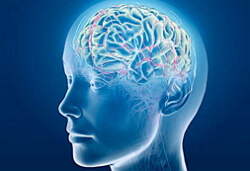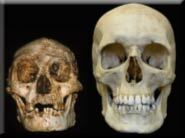Agnosia
 Agnosia is the impossibility to perceive, recognize phenomena, objects and their meaning, thanks to one or several sensory analyzers, while the intellect, consciousness, normal structure of the analyzers and their sensitivity remain unchanged. Allocate auditory, visual, tactile agnosia.
Agnosia is the impossibility to perceive, recognize phenomena, objects and their meaning, thanks to one or several sensory analyzers, while the intellect, consciousness, normal structure of the analyzers and their sensitivity remain unchanged. Allocate auditory, visual, tactile agnosia.
Agnosia is a pathological condition characterized by damage to the cerebral cortex and subcortical structures. In agnosia, the processes of recognition of various stimuli change, and as a result, the perception of objects and their incorrect evaluation change.
Based on the latest statistics, agnosia is a fairly rare occurrence of pathology, about 1% of the planet's inhabitants have this type of pathological changes, the main contingent subject to this pathology, children 10-16 years of age, adult population.
Agnosia is what?
In practice of psychiatric activity, agnosis is understood as the inability to perceive the information flow received from the sensory analyzers. Although agnosia is a rare enough pathology, it proceeds rapidly and is characterized by many-sided manifestations, which greatly hampers the life and socialization of patients with this pathology.
The causes of the appearance of agnosia are very diverse, and the manifestations are very individual, which complicates the diagnostic tactics and requires a comprehensive approach to such patients.
Symptomatic manifestations of this disease are caused by the localization of the zone of pathological changes in the brain and its cortical structures. For example, a lesion on the left occipital region, causes the subject agnosia, damaged areas of the cortex of the temporal expression causes audioverbal agnosia, visual agnosia appears when damaged cortical structures occipital region, change the parieto-occipital region of its middle portions, facilitates tactile agnosia.
Among the basic causal factors causing the emergence of this pathological condition, we can distinguish:
- ONMC - heart attack GM, stroke;
- closed or open CCT;
- tumor processes;
- disorders of cerebral circulation of a chronic nature( atherosclerosis);
- Alzheimer's disease;
- Parkinson's disease;
- inflammatory lesions of the brain( encephalitis).
Identify the main varieties of agnosias - visual, auditory, tactile.
Less common is spatial agnosia, which is characterized by a change in perception of various parameters of space. Depending on the location of areas of damage, spatial agnosia, possible symptoms as changes in stereoscopic vision, occurs when the cortical GM changes in the structure of the left hemisphere, the inability to perceive objects on or near, and not the perception of three-dimensional space, manifested in changes of a pathological nature parietal-occipital region.
The most rare variety of agnosia is ankinetopia - this is the inability to perceive time and movement, only a few cases have been described in the medical literature.
Spotting agnosia
This type of described pathology is manifested by the patient's inability to identify objects and pictorial symbols, with the proper functioning of the visual analyzer. Agnosis of the visual manifest in the pathologically altered part of the occipital lobe. It manifests itself in a very diverse manner, distinguishing the main varieties of this pathology: objective, prozopagnozia, color, simultaneous, Balint syndrome, weakness of optical representations, letter agnosia.
Consider each of the varieties:
- Subject agnosia( agnosia Lissauera) manifested when a pathological changes the surface facing the cranial vault, the occipital lobe, the left part thereof. Reflected by the inability to perceive objects, the patient can tell about certain characteristic features of the object, but it is difficult to pronounce the name of the object located in front of the patient.
- Color agnosia is the result of pathological changes in the occipital lobe of the left leading hemisphere. It is characterized by the inability to systematize colors, to correlate the hue with a given object or object, to identify colors and shades of the same order.
- Prosopagnosia or agnosia on the face occurs with pathological changes in the right hemisphere, lower-occipital lobe. The presence of this agnosia does not allow the patient to recognize the persons known to him, although the patient perpetuates faces as objects and distinguishes their separate parts, yet he finds it difficult to relate the person to a certain person. The most severe manifestation is when the patient is unable to identify his reflection.
- Weakness of optical representations. Patients with this type of disease are unable to identify this object and give its characteristics( specify color, shape, size, texture).It is a consequence of pathological changes in the occipital parietal zone from both sides.
- Simultaneous agnosia is manifested when pathological changes occur in the anterior part of the leading occipital lobe, characterized by the inability to perceive a large number of objects, sometimes patients can see a single object from the set.
- Balint's syndrome is a kind of agnosia, manifested due to damage to the optic-motor sphere, which are the consequence of pathological changes occurring in the occipital parietal area on both sides. Balint's syndrome is manifested by the inability to focus on a specific subject, such patients are difficult to read, due to the fact that it is difficult for them to make the transition from word to word.
- Literal agnosia is the loss of the ability to read and recognize letters.
Agnosia auditory
Auditory agnosia is a pathology that occupies second place in prevalence, after visual. At the heart of pathological changes in auditory agnosia lies the inability of a person to perceive speech and sound information, although the anatomical structure and physiology of the auditory analyzer and conducting paths remain unchanged. These manifestations are a consequence of pathological changes in the cortical structures of the temporal lobe.
Auditory agnosia is divided into: simple auditory perception disorder, auditory agnosia and tonal agnosia.
- A simple disorder of auditory perception - people who have this pathology do not perceive sounds that were familiar to them, namely, the murmur of water, the sound of the surf, the howling of the wind rustles the leaves, creaking, knocking. A simple sound disorder occurs when the right temporal region is damaged. If the damage occurs on both sides, the manifestations are more pronounced. Varieties of simple auditory agnosia can be called arrhythmia and amusia.
Arrhythmia, characterized by the inability to perceive the rhythmic structure of sound and the impossibility of its reproduction, respectively, patients who have this type of auditory agnosia, are unable to correctly repeat the heard rhythm and sound series( claps, knock), and it is also difficult for such patients to learn poems.
With amosia, a person who has this pathology is unable to recognize and reproduce the melody heard, can not distinguish between melodies. In such patients singing causes difficulties.
Auditory agnosia is an inability to perceive speech. A patient having this pathology form, native speech identifies, as a set of unimportant sound elements.
Tone agnosia or intonation, is characterized by non-perception of emotional coloring of sound, inability to distinguish tone, timbre, expression, although understanding the meaning of the above is preserved.



